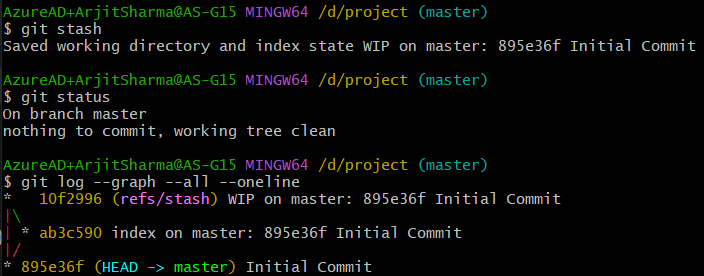Stashing in Git
Stashing allows you to save uncommitted changes temporarily and restore them later. This is useful when you’re interrupted and need to switch contexts without committing your work.
Basic Stashing workflow
[do some work]
[get interrupted]
git stash
[deal with interruption]
git stash pop
Example Scenario -
Lets say I am in following state



My project had just 1 commit, which is the first line but then while adding new feature I got interrupted, thats where git stash comes into play.
git stash
git status
git log --graph --all --oneline

The stash branch created is special one. And now state is back to the previous commit and yet my changes are saved.

After doing this ad-hoc work we can pop back our changes
git stash pop
Multiple Stash
Lets say we were working on a feature and we gave one implementation but stashed it and then second implementation stashed it too.
git stash list # Shows all the stashes
To check stash information
git stash show --patch stash@{0}
git stash show --patch stash@{1}
Applying Specific Stash
After above step we will know which stash had right implementation and we can apply that
git stash apply stash@{1}
Deleting a Stash
To drop another implementation we can use drop
git stash drop stash@{0}
git stash clear # remove all stashes
How to Stash Untracked Files?
Normally, stash only tracks files that are already being tracked ( new files that are’nt added/staged do not get saved )
In order to save untracked files, use
git stash -u
# If we want to stash everything even those mentioned in .gitignore
git stash --all